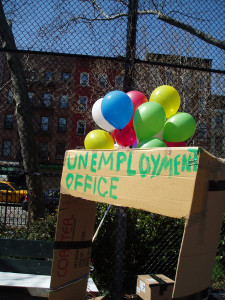By: Sathiyan Sivakumaran
As the presidential campaigns continue to rage on, the economy can be overlooked at times with the unemployment rate at around 5%. However, millennials are fervently looking for jobs up to a year before graduating college, and people still find themselves asking where the jobs are. Why is this happening when the unemployment rate is at its lowest since 2008? Unfortunately, just as college students would love to point out that one number can’t tell all regarding their GPAs, we have to look at the unemployment rate as just a piece of the puzzle.
According to the Bureau of Labor Statistics, the unemployment rate is currently sitting at around 5.1% as of August. As great as this sounds, millennials and many others continue to struggle to find jobs suitable for their levels and types of educational attainment. These struggles are reflected by labor force participation rate numbers and the unemployment rates among 16 to 24 year olds.
When we think about how the recovery began in mid-2009, it’s shocking to see how labor force participation rate has decreased from 65.7% to 62.6% now. Unemployment rate only takes people in the labor force into account, so when people are too discouraged to look for jobs, the unemployment rate doesn’t take that into account. In addition, the unemployment rates among 16 to 24 year olds with Bachelor’s degrees and higher was approximately 8% as of late 2014. This was easily 2% above the national unemployment rate. Any less than a Bachelor’s or Associate’s degree, and the job prospects decrease fairly dramatically.
The steady decline of unemployment rate from the peak of around 10% in the Great Recession has led many politicians to believe the economy is getting healthy. While it has improved, the numbers other than unemployment rate, as well as the unemployment numbers among different demographics, leave a lot to be desired. Just like GPA doesn’t tell us everything about the quality of the student, the unemployment rate doesn’t tell us everything about the health of the economy. We need to take a deeper look into the people.

